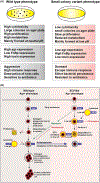Intracellular escape strategies of Staphylococcus aureus in persistent cutaneous infections
- PMID: 33179358
- PMCID: PMC8110615
- DOI: 10.1111/exd.14235
Intracellular escape strategies of Staphylococcus aureus in persistent cutaneous infections
Abstract
Pathogenic invasion of Staphylococcus aureus is a major concern in patients with chronic skin diseases like atopic dermatitis (AD), epidermolysis bullosa (EB), or chronic diabetic foot and venous leg ulcers, and can result in persistent and life-threatening chronic non-healing wounds. Staphylococcus aureus is generally recognized as extracellular pathogens. However, S. aureus can also invade, hide and persist in skin cells to contribute to wound chronicity. The intracellular life cycle of S. aureus is currently incompletely understood, although published studies indicate that its intracellular escape strategies play an important role in persistent cutaneous infections. This review provides current scientific knowledge about the intracellular life cycle of S. aureus in skin cells, which can be classified into professional and non-professional antigen-presenting cells, and its strategies to escape adaptive defense mechanisms. First, we discuss phenotypic switch of S. aureus, which affects intracellular routing and degradation. This review also evaluates potential intracellular escape mechanism of S. aureus to avoid intracellular degradation and antigen presentation, preventing an immune response. Furthermore, we discuss potential drug targets that can interfere with the intracellular life cycle of S. aureus. Taken together, this review aimed to increase scientific understanding about the intracellular life cycle of S. aureus into skin cells and its strategies to evade the host immune response, information that is crucial to reduce pathogenic invasion and life-threatening persistence of S. aureus in chronic cutaneous infections.
Keywords: Staphylococcus aureus; antigen-presenting cells; intracellular bacteria; skin; wounds.
© 2020 John Wiley & Sons A/S. Published by John Wiley & Sons Ltd.
Conflict of interest statement
CONFLICT OF INTEREST
The authors declare no conflict of interest.
Figures



References
-
- van der Kooi-Pol MM, Duipmans JC, Jonkman MF, van Dijl JM. Host-pathogen interactions in epidermolysis bullosa patients colonized with Staphylococcus aureus. Int J Med Microbiol. 2014;304:195–203. - PubMed
-
- Nowicka D, Grywalska E Staphylococcus aureus and host immunity in recurrent furunculosis. Dermatology. 2019;235:295–305. - PubMed
Publication types
MeSH terms
Grants and funding
LinkOut - more resources
Full Text Sources
Medical

